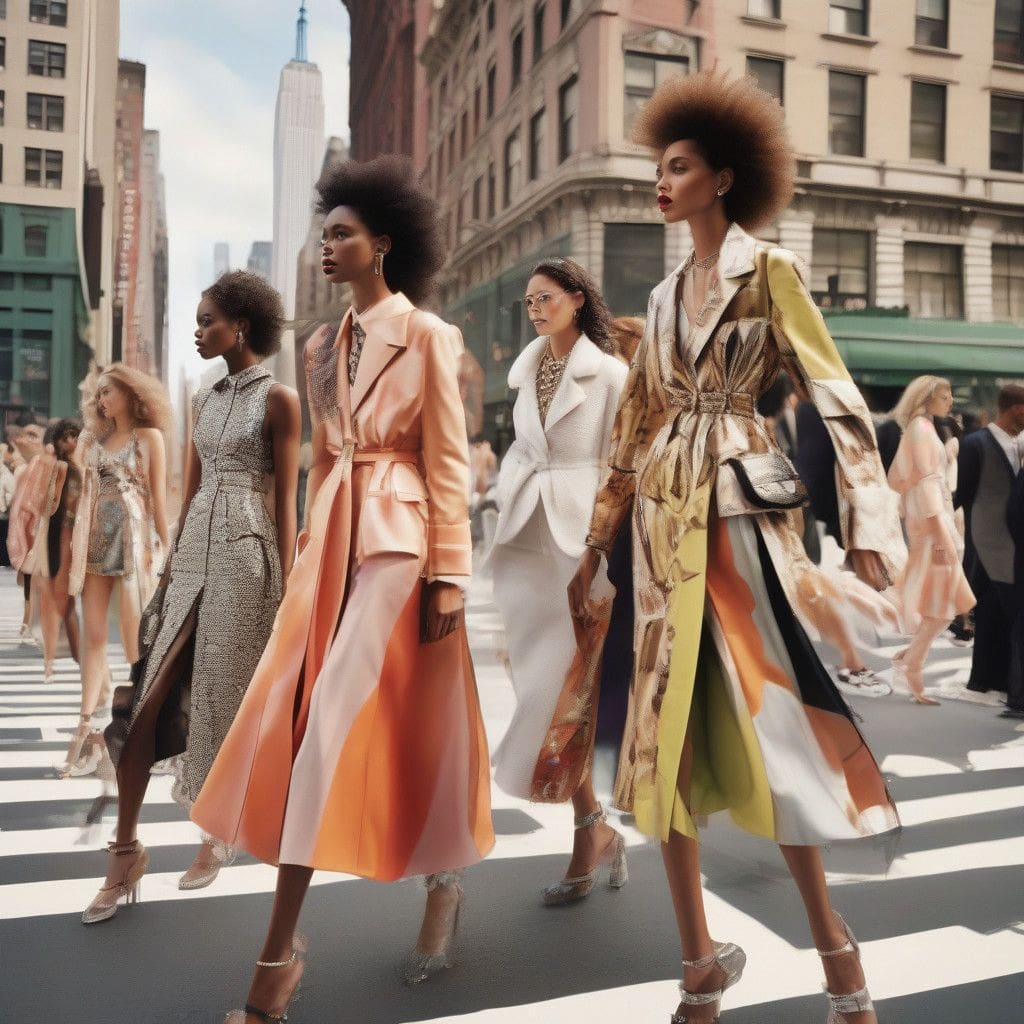As the New York Fashion Week unfolded in September 2024, it became evident that the context of this year’s event was significantly shaped by the intense political climate in the United States. With the presidential election only 55 days away, the anxieties surrounding the outcome inevitably crept into the realm of fashion.
Many designers chose to address this charged atmosphere creatively and boldly. Willy Chavarria, known for his thoughtful and culturally resonant designs, perhaps delivered the strongest statement of the week. At his show, each guest found a copy of the United States Constitution on their seat, a clear invitation to reflect on democratic values amid uncertain times. Chavarria’s Spring/Summer 2025 collection included meticulously crafted wide trousers and worker shirts bearing “Willy Chavarria Fashion Services,” reimagining them as tools of empowerment rather than mere clothing. The closing of his show saw the designer himself wearing a shirt emblazoned with the initials ACLU, underlining his commitment to civil rights.
In stark contrast, while the audience at Alaïa showcased a more sultry ambiance—reflective of a wealthy, cosmopolitan lifestyle—it was hard to escape the whispers of political tension hovering near. The luxurious confines of the Guggenheim Museum set the stage for this dramatic display. A late arrival by none other than Rihanna drew gasps, as she glided in adorned in sparkling Alaïa net over a curvaceous corset. The collection itself explored elegance and proportion through palazzo pants and vibrant jackets, nodding to both contemporary sensibilities and classic American couture. But, amidst the exquisite craftsmanship, some critics noted a lack of warmth and deeper engagement with the current societal dichotomies.
The show by Collina Strada added an element of playful optimism, diverging markedly from its more highbrow counterparts. Set against an unusual backdrop in a hidden East Village cemetery, Hillary Taymour illustrated a refreshing take on fashion as a kind of joyous rebellion. Models showcased whimsical garments featuring ruffles and bright tie-dye hues, capturing a spirit of carefree expression that felt both vibrant and disarming.
Meanwhile, Catherine Holstein of Khaite tackled the delicate relationship between innovation and brand identity. Her latest collection offered an exploration of texture and form but lacked clarity in focus. In the pursuit of freshness, some designs resembled unintentional caricatures rather than the high-end appeal her brand is known for. Yet, a return to her signature leather jackets and luxurious fabrics provided a reassuring nod to her established aesthetic.
Across the stadium, the youthful vibe pervasive in Kim Shui’s runway created an engaging juxtaposition. The clothing was daringly cheeky, featuring skin-baring designs that celebrated individualism and body positivity. Models strutted in taut jeans and unconventional embellishments, catering to a younger audience eager for fun and flirtation in their wardrobes. This fresh approach will likely resonate well beyond the confines of Fashion Week, appealing to a demographic that values freedom of expression.
In contrast, the more conservative offering by Carolina Herrera avoided political commentary entirely, instead providing a chic representation of haute bourgeois elegance. A sophisticated lineup of dresses featured intricate lace and classic silhouettes. However, for some, this evocation of elite style felt disconnected from the pressing narratives of today.
The emotional temperament at New York Fashion Week was encapsulated perfectly by Luar’s Raul López, whose presentation outside Rockefeller Center seemed to blend robust fashion with a social statement. With sweeping shapes and exaggerated silhouettes, López’s showcase was a reminder of the important place culture occupies in the designs of contemporary fashion.
Michael Kors brought an inspired nod to classic film influences in his collection with a darkly glamorous sensibility that felt simultaneously nostalgic and fresh. The use of raffia—a summer staple—spoke not only to environmental concerns but also reflected the evolving nature of modern couture. His pieces, resembling a blend of creativity and practicality, may just resonate with consumers looking for meaningful connections to their clothing.
Tory Burch initiated a dialogue around athleisure with her daring yet elegant renditions of sweatpants, seamlessly pulling them to cloak stylish swimsuits. While previously viewed as a drop into lazy style, Burch’s designs proved that casual wear can still be chic.
As Fashion Week progressed, the essence captured was a marvelous mix of hope and fear, tradition and rebellion; a fascinating reflection of the society from which these collections emerge. Fashion, as exhibited in the runways of New York, continues to act as a mirror—revealing not just what we wear, but who we are and what we aspire to be.











